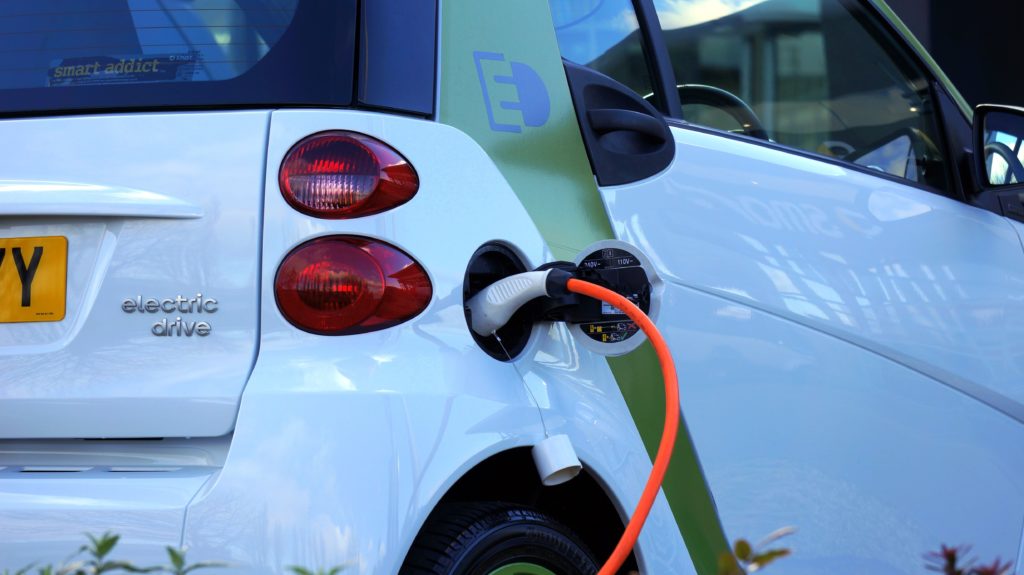This week, Vermont’s Agency of Transportation (VTrans) announced the launch of a new statewide electric vehicle (EV) incentive program as legislatively mandated through a VPIRG-backed provision in the 2019 Transportation Bill. This new incentive program will help low to moderate income Vermonters make the much-needed transition from internal combustion engines to cleaner vehicles, helping to reduce climate pollution in Vermont.
The transportation sector contributes 43% of our statewide carbon pollution. According to the Energy Action Network, Vermont must get 90,000 electric vehicles on the road in order to meet our 2025 climate pollution commitments.[1] Currently, Vermont has just over 3,000 registered EVs on the road. If we want to be working towards reductions in our transportation sector, it’s vital that we make it as easy as possible for folks to make the transition to EVs – and this new program gets us one step closer to that goal.
The incentives are available for purchasers with a household income of about $92,000 or less, who are purchasing an EV with a base price of $40,000 or less. Interested Vermonters who are eligible for state weatherization assistance can receive even higher incentives to help purchase an EV.
Wondering if you’re eligible for an EV incentive? Check out this chart!
General EV Incentive Eligibility
| Vehicle Type | State of Vermont Incentive For $92,493 Household Income or Less
(160% of Median Income) |
Larger State of Vermont Incentive for Lower Income Households (Weatherization Eligible) |
| Plug-in Hybrid Electric Vehicle | $1,500 | $4,000 |
| All-Electric Vehicle | $2,500 | $5,000 |
Source: https://www.driveelectricvt.com/why-go-electric/purchase-incentives
Incentives are specific to both model and retailer, so please take a look at the vehicle incentive tool and the dealer list.
There are two options for opting into the incentive program: point-of-sale and consumer-direct.[2] Point-of-sale allows the state to pass the incentive directly through the auto-dealer while the consumer-direct allows incentives to be passed directly onto the buyer. If you’re interested, you can find the relevant applications here.
Apart from the new incentive program, drivers looking to switch to an EV can take advantage of other opportunities. At the Federal Level, depending on the make and model of the vehicle, you could receive a credit of up to $7,500.
Thanks in large part to requirements in Vermont’s Renewable Energy Standard, all of Vermont’s electric utilities are now offering additional EV incentives as well – and several are offering lower charging rates or other benefits to encourage their use and adoption.
For example, Green Mountain Power (GMP) offers $1,500 for a new, completely electric vehicle, $1,000 for a new plug-in hybrid, and $750 for a used electric vehicle in either category, plus additional incentives for low-to-moderate income Vermonters.
They also offer free Level 2 charging equipment with the purchase of any new electric vehicle, and you can get a $10/month credit if you authorize GMP to save all ratepayers money by temporarily turning off your charging equipment during peak hours.
Burlington Electric Department (BED) also offers incentives for customers looking to purchase or lease an EV. You can receive a $1,200 rebate on the purchase or lease of any electric vehicle (plug-in hybrid or all-electric) that costs $50,000 or less. Low-to-moderate income customers are also eligible for an addition $600 for all-electric and $300 for a plug-in hybrid.
BED also offers a discounted charging rate of 6.8cents/Kwh with an approved charger, during off-peak hours – like GMP, partly as an incentive, and partly because by charging EVs when electricity is cheaper EV owners can help bring the cost of electricity down for all Vermonters.
More details on the offers from these two utilities, as well as other utility-specific incentives can be found here.
VPIRG is excited to see more EVs on the road and, more specifically, at the potential of significant reductions in our transportation sector. The program runs on a first-come first-serve basis, so we encourage anybody interested to apply as soon as possible!
While these new incentives are a step in the right direction, it should go without saying they’ll only scratch the surface of what we need to do to cut climate pollution in the transportation sector. Want to learn more about what VPIRG will be pushing for in the 2020 legislative session? You can find that here.
[1] Energy Action Network 2018 Annual Progress Report
[2] https://www.driveelectricvt.com/why-go-electric/purchase-incentives

